West Bay Woodturners Newsletter is a monthly update on the club activities. This free resource is available to beginner and professional woodturners.
Next Meeting
Wednesday June 19,
7 pm at Bridges Church,
625 Magdalena Ave,
Los Altos 94024
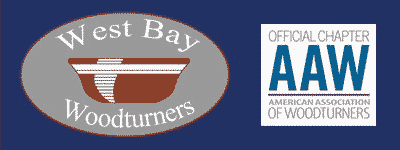
Program
A Piercing Demo! Dave Vannier will be showing us what is involved in making his pierced pieces. We will start with a discussion of the requirements of the turned piece and the different tools that he uses along with other options. He will bring a few different examples of the different styles he has been developing. While showing the piercing process it can get quite loud, so he recommends you bring some ear protection.
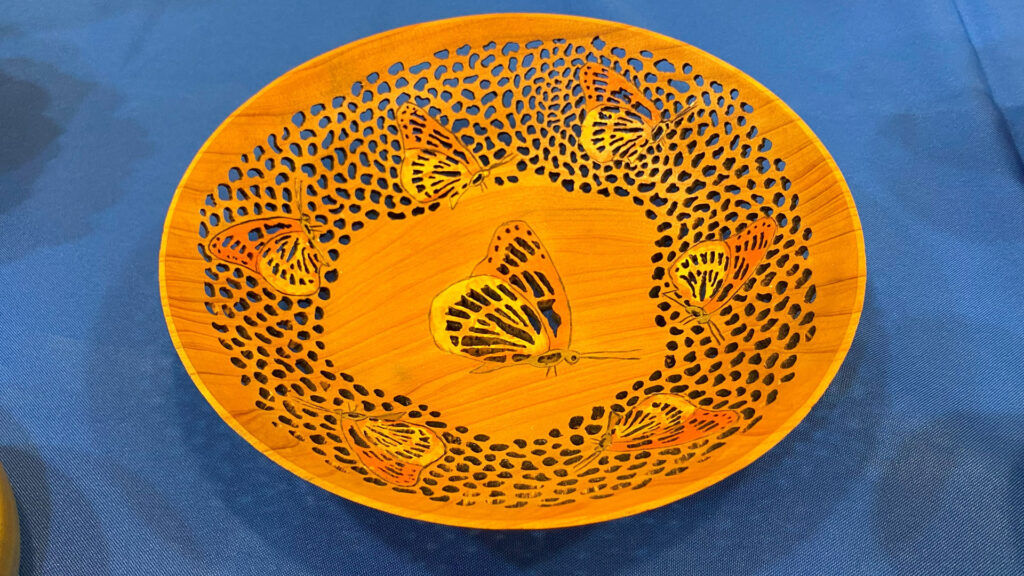
President’s challenge:
Can you replicate? For June, it has to be a spindle project, now that I showed you all sorts of tricks at the last meeting! But here’s the catch (but I hope not at the lathe!) : make two or more detailed spindles as identical as you can manage. See if the marking and sizing tips from the last demo can help you. The project could be candlesticks, finials, ornaments, feet, handles…
Upcoming Meetings and Demos
- June 9 (Sunday) demo: Sally Ault will be doing a live woodturning demonstration that includes embellishment techniques. 10:00-4:00 at MakerNexus Sunnyvale, $30.00 at the door.
- July 17 meeting: Very open to suggestions!
- August 7: picnic at Cuesta Park, Mountain View.
- September 18 meeting: ?
- October 5 (Saturday) demo: Eric Lofstrom, details to follow
President’s Message
I hope the many of you who traveled to Portland for the AAW symposium had a great time. I plan on asking for your impressions and take-aways at the next meeting. It will be great to hear for those of us who couldn’t make it in person. The recorded sessions (20!) were just released last week, so I plan on watching many of those, with the benefit of rewind and replay as needed! As David points out below, it can be inspiring to see experts and their techniques, and can lead you to explore and try new things. Don’t hesitate to share any experiments and learnings on our Slack channel, bring your piece in to show in person, or even demonstrate at the meeting. Happy discoveries!
Claude Godcharles
Last Meeting Review
Wednesday May 15, 2024
Woodturners newsletter notes by Laura Rhodes, pictures by Angela Gunn and Roman Chernikov
Announcements
- Guests:
- James Craig
- Sanding Workshop – 1pm – 4pm, Sunday May 19, Palo Alto Adult School Woodshop – be sure to bring a dust mask.
- Freebies:
- Assorted small wood pieces from former member, Richard Davis
- Slightly used carbide inserts from Palo Alto Adult School jointer and planer (can make great paint/glue scrapers)
- Picnic – 1st Wednesday in August
- Former member, Ron Seltzer, passed away last year. He donated his equipment to WBW and SVW. Look for details about a sale on June 15, 9:30am – 12:00pm at Dennis Lillis’s shop. A list of some of the larger equipment along with their fair market values will be coming out soon. Smaller tools will also be available for sale.
- Bay Area Woodworkers (BAWA) is having a fine woodworking show at Woodcraft in San Carlos, June 8-9. Entries from BAWA and non-BAWA members are welcome. See more details about the show on BAWA website.
Spindle turning for furniture. Program by Bob Bley
Bob gave a slide show with examples of spindle turning for furniture.
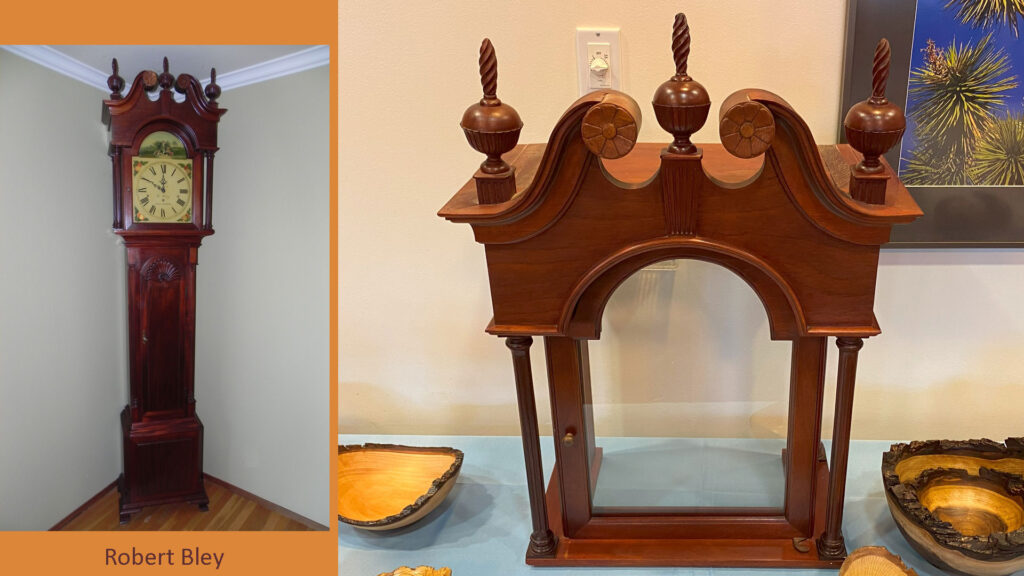
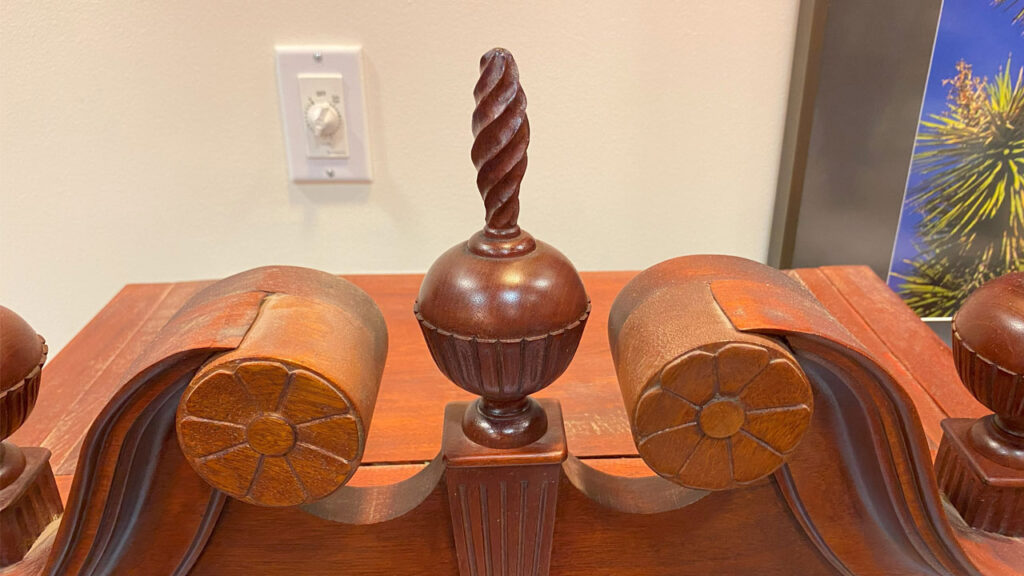
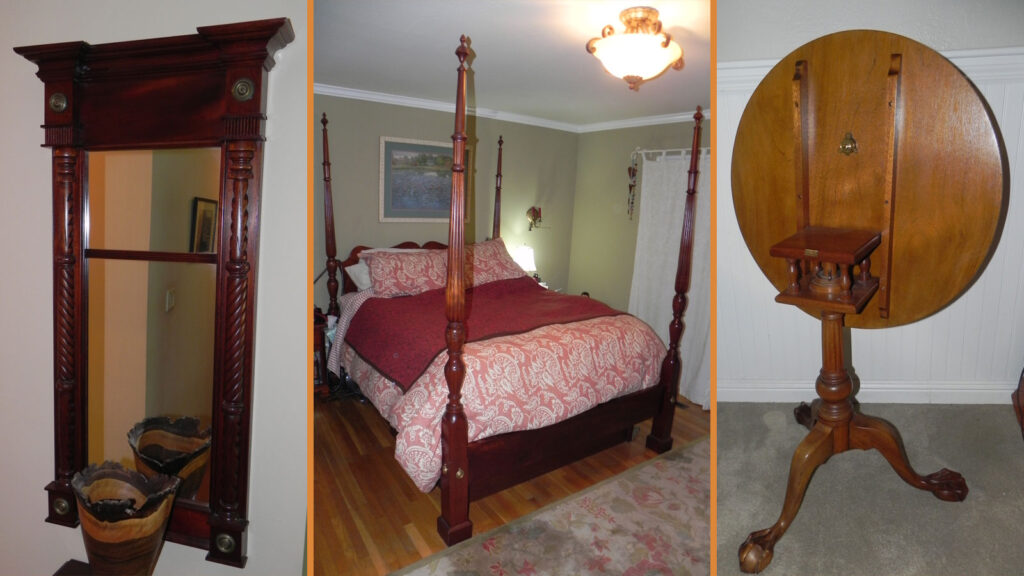
In 1989, Bob made a grandfather clock. It stands 8’ tall and contains many turned features, including: four fluted columns; three flame finials; 270-degree columns on the sides. He brought in the clock’s bonnet to show us. He’s also made a four-poster bed with each post consisting of 5 sections connected with dowels. He showed photos of his tilt-top table with four turned spiral columns, a turned main column and carved ball-and-claw feet. He showed some examples of painted tables with turned legs.
Spindles, one, two, too many! Program by Claude Godcharles
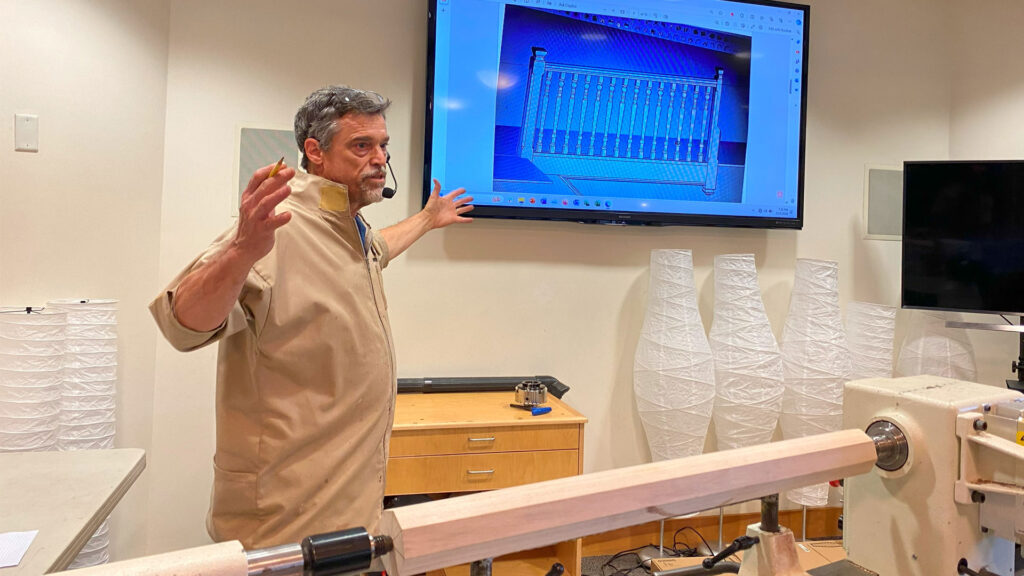
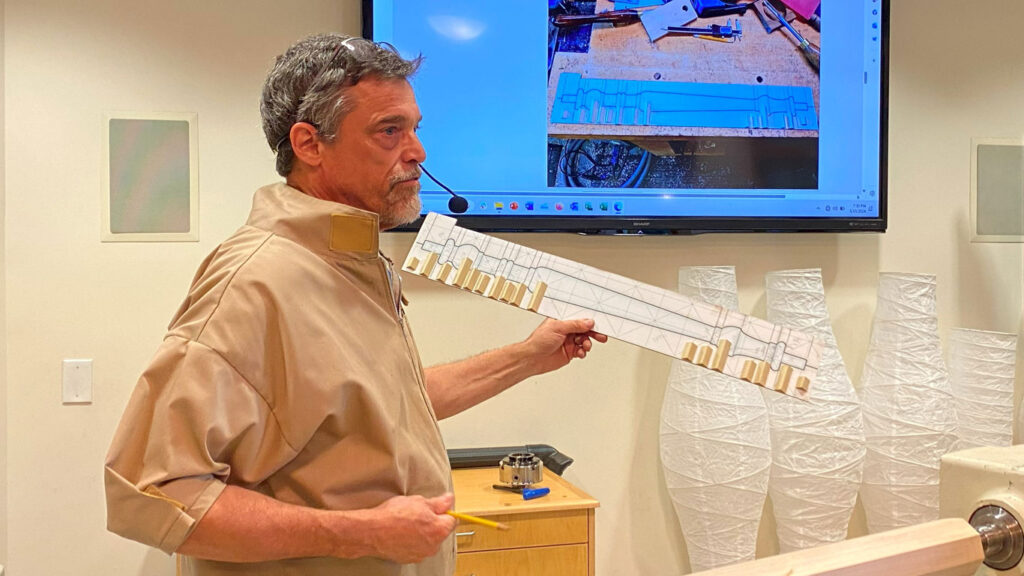
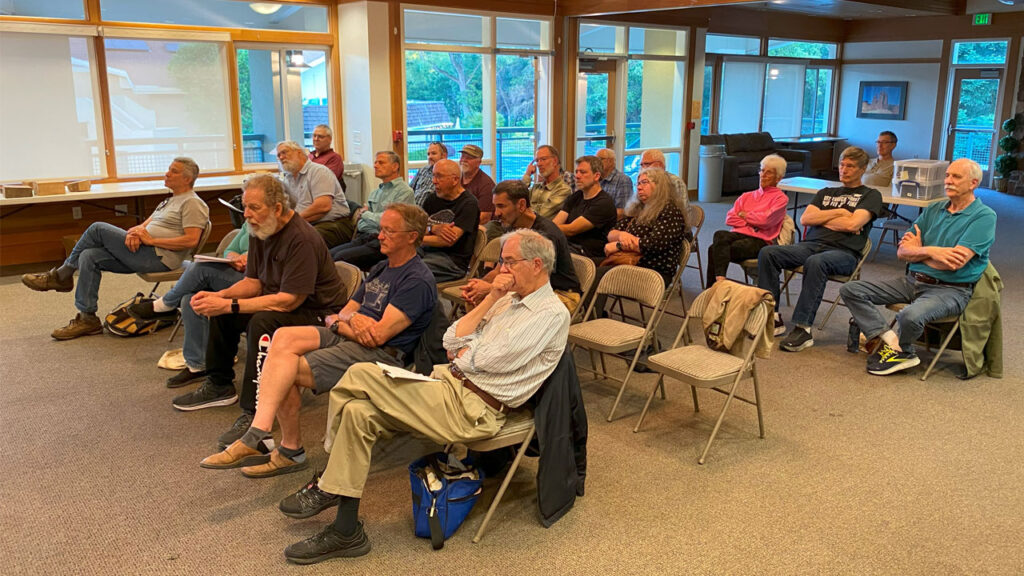
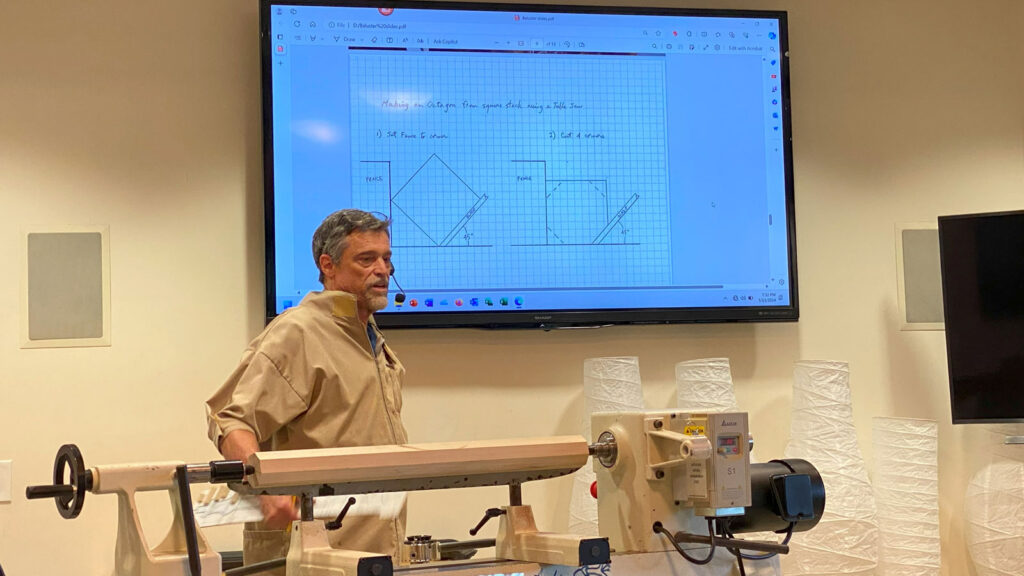
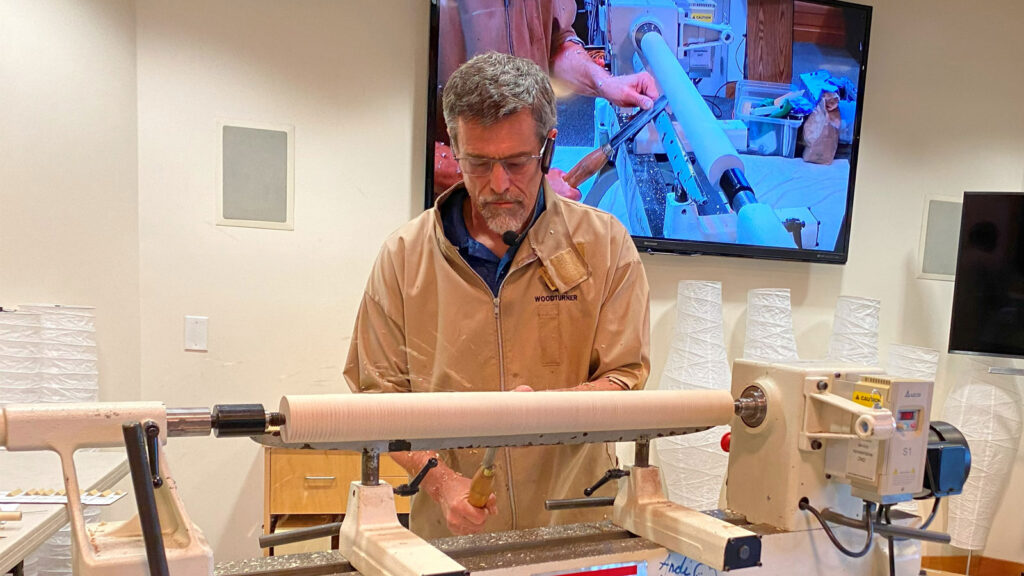
Claude talked about how he was approached to help with a project to replicate balusters in a historical house in the Santa Barbara area. He was tasked with making 15 identical balusters. He was given the dimensions in a SketchUp file. One unusual feature of each baluster was that the square sections at the top and bottom were of a smaller width than the widest turned feature. Claude provided tenons on each end to fit into mortices in the square sections (made by his client). The balusters were going to be painted, so Claude used paint-grade poplar (12/4 poplar purchased from Moore Newton Quality Hardwoods), sanded to 150 grit. He made a template/story stick from the SketchUp file and glued it onto a piece of hardboard. His first sample turning took him 3 hours, but he was able to speed up his time with practice. He estimated that it would take him 25 hours to complete all the required balusters, in the end, it took him 27 hours. He delivered 17 balusters.
There were several features about his storyboard that helped with the turning. The template had a corner edge which he could quickly register with a shoulder on one end of his turning. There were small grooves on the template in which the point of the pencil would fit to quickly mark each of the transition points. Small wooden blocks on the template were used to set (or reset) his calipers for each of the 7-8 different key diameter locations on the baluster. Claude used an “army” of calipers to avoid having to constantly adjust them.
For the actual turning, Claude used only four tools: a roughing gouge; a beading-and-parting tool; a detail spindle gouge; and a skew chisel. To speed up the turning process, he first octagonalized the blanks on the table saw. Then he mounted the blank on the lathe between centers – a Steb drive center in the headstock and a safe-center in the tailstock. Claude had an extra long tool rest that made use of two banjos mounted on the lathe. Using a roughing gouge, he made the blank round. Then he made one sharp shoulder using the beading and parting tool. He rested the corner of his template against this shoulder and marked each of the transitions on the blank by resting his pencil in each of the grooves on the template. Then he cut all the smallest diameters using the beading and parting tool in conjunction with his calipers. Next beads were cut with the detail spindle gouge. Long tapers were cut first with the roughing gouge with finish cuts using the skew.
An audience member asked why he didn’t use a lathe duplicator. The main reason was that Claude didn’t have one. Others noted that since most duplicators scrape rather than cut, the surface finish is not as good as can be achieved with a gouge and skew.
Presidents Challenge: Keep it natural!
Bring in a piece that shows the natural edge from the tree log.
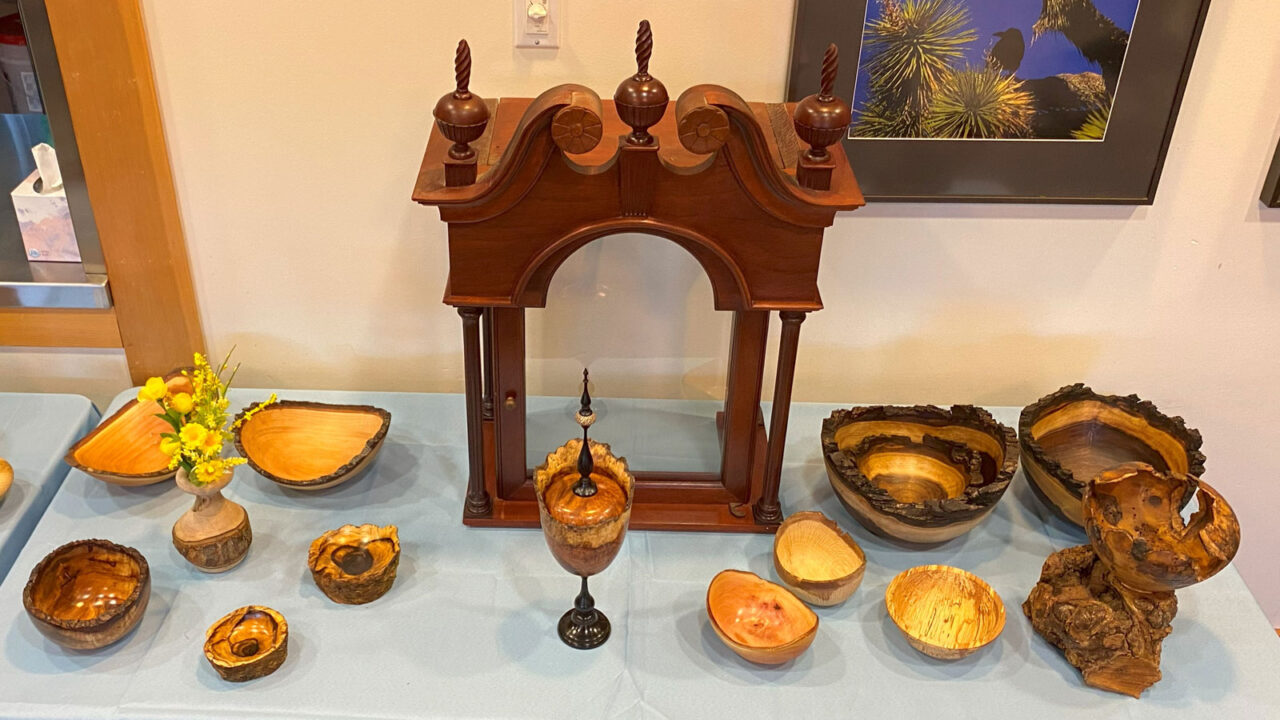
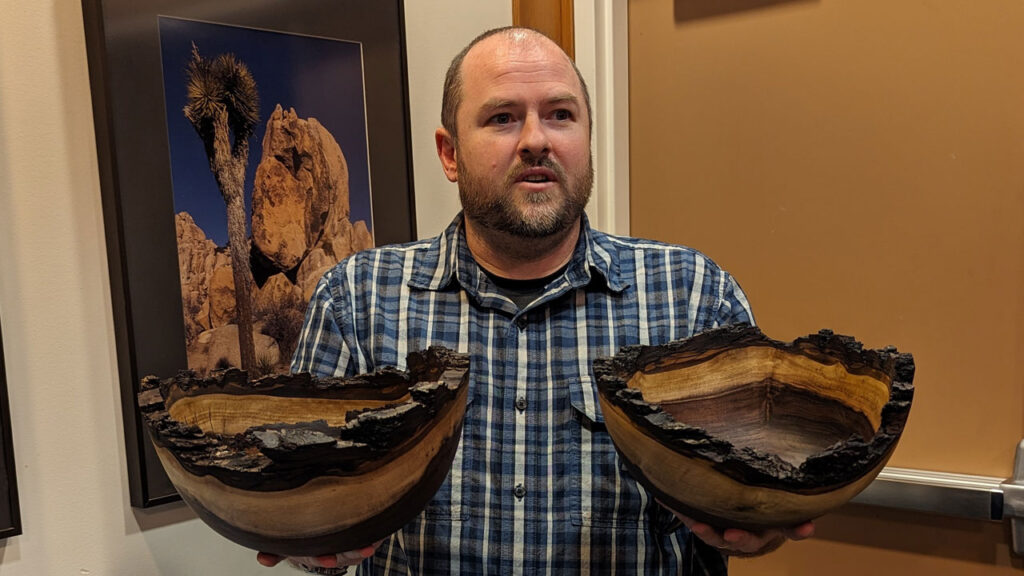
Nate Segraves brought three live edge Claro Walnut bowl. The first was quite unbalanced and he never was able to spin faster than 600 rpm. He also showed a pair of nested (cored) bowls. Both of these were better balanced. He was able to get the lathe up to ~1000 rpm, making these easier to cut. The bark stayed on all three of these bowls. Nate believes this was because the tree winter-cut, having been downed in January 2023.
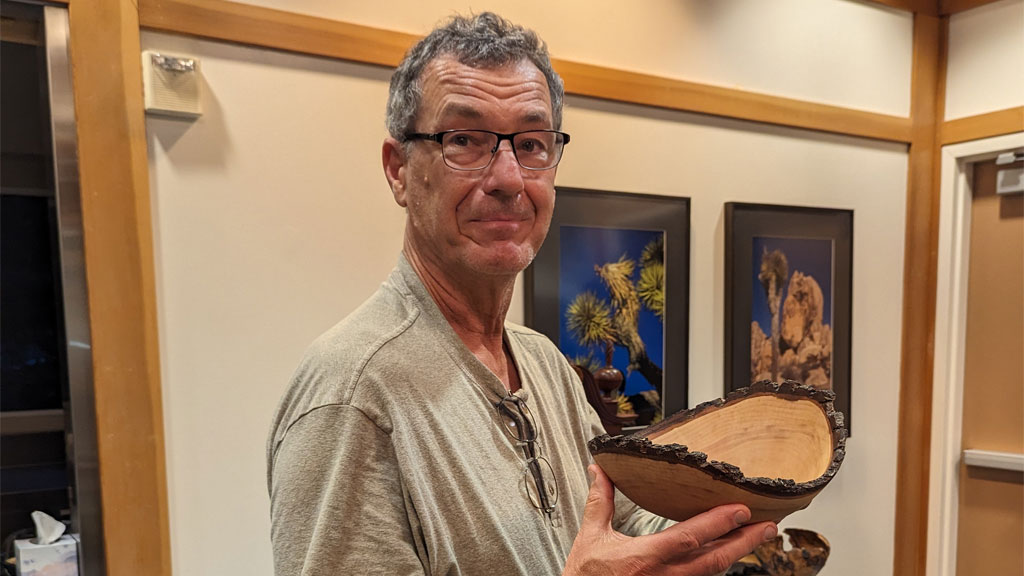
Jon Bishop showed a live edge pear bowl. Originally it had been rough-turned and let to dry. He re-turned it and finished it with Tried and True (Jon’s current favorite finish).
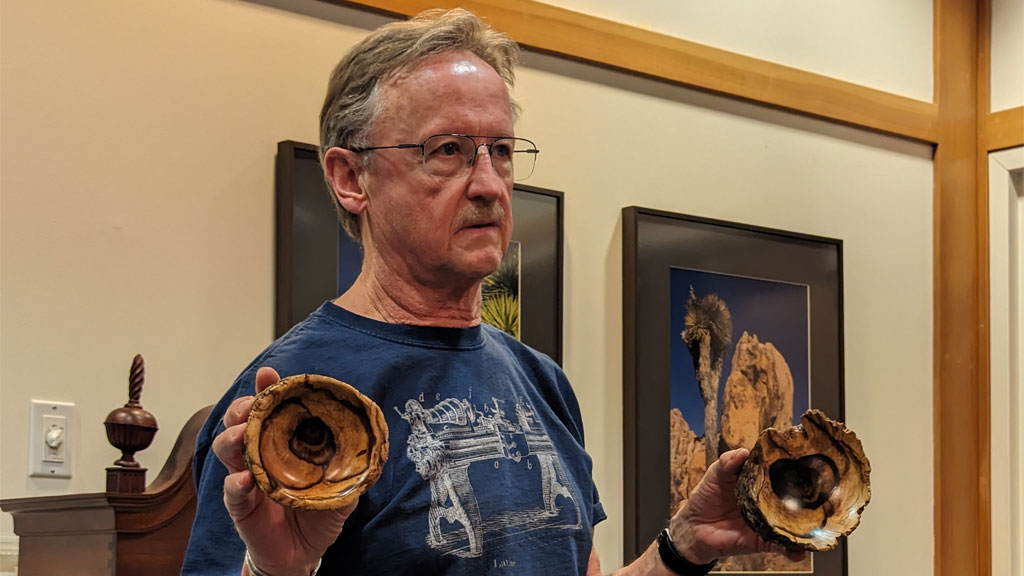
Tom Gaston brought two key trays turned from a hard “mystery” wood with a dark center. It was suggested that the wood might be persimmon.
Bob Bley showed a vessel with finial. It was the first time he had turned amboyna burl and also the first time that he had used betel nut. Per Jon Sauer suggestion, Bob first drilled a hole in the betel nut and glued in a dowel. Mounting the dowel in the chuck, he was able to drill a hole in the other end and glue in another dowel. The finial and foot of the vessel were made of Blackwood.
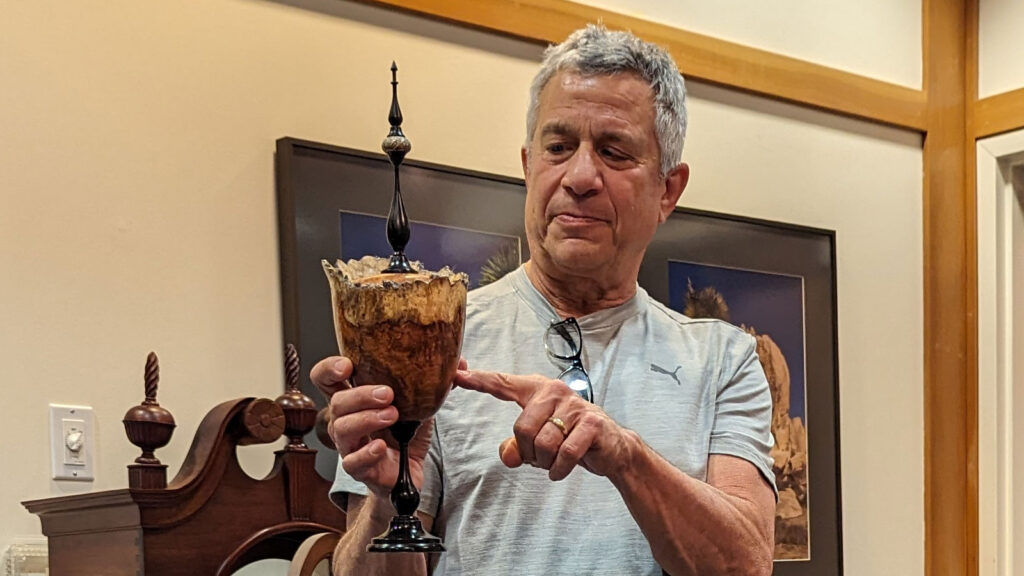
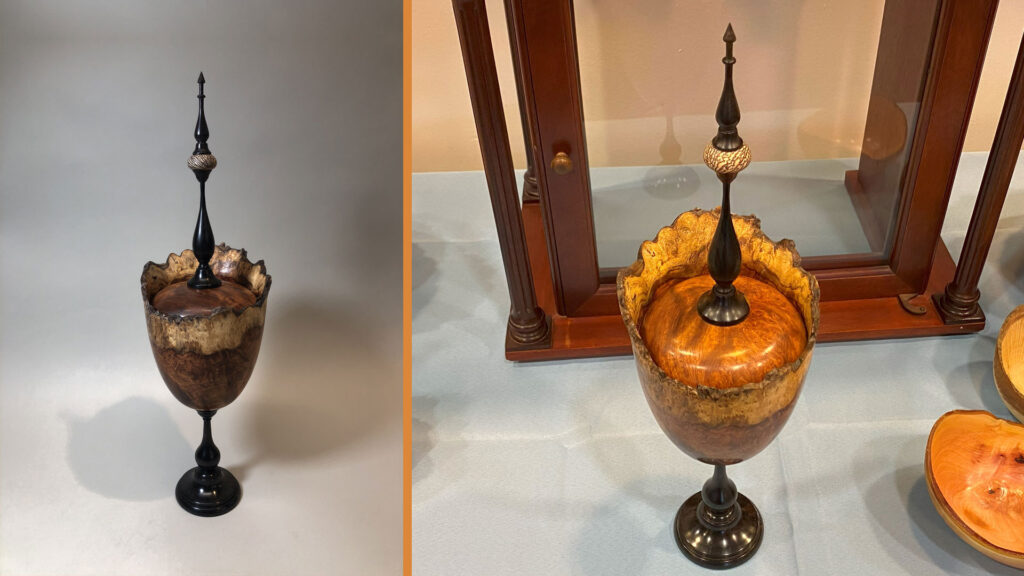
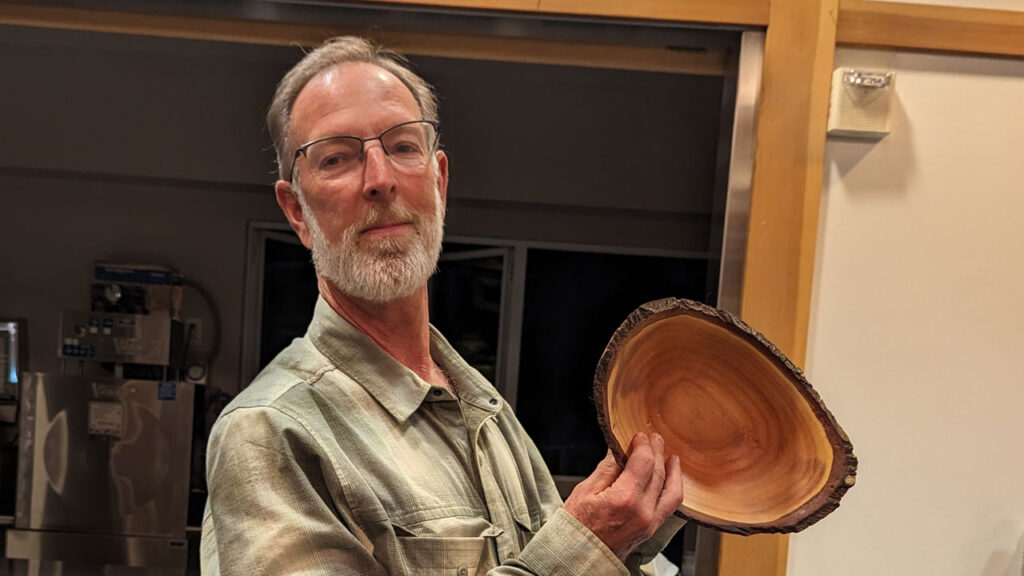
Dean Caudle brought in a live edge bowl made of “mystery wood”. He was in Manresa State Park and heard chainsaws running. He tracked the sounds to the source and the ranger kindly provided him with some pieces of wood.
Angela Gunn showed a flowerpot. Not having hollowing tools, she drilled partway through the neck opening and deepened the hole using her spindle gouge like a drill. Her husband and her mom were quite amazed with the piece, exclaiming, “You made that?!”.
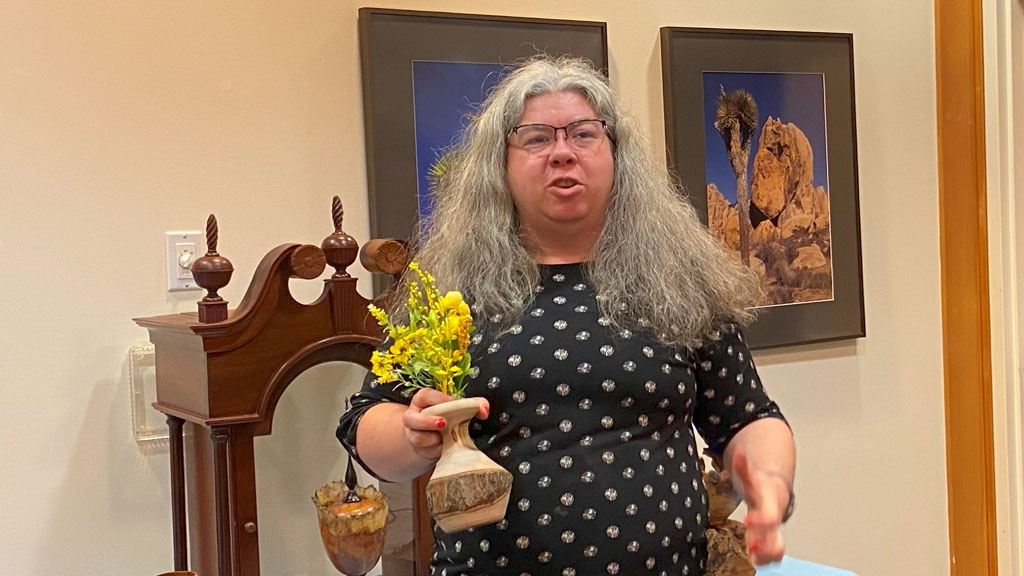
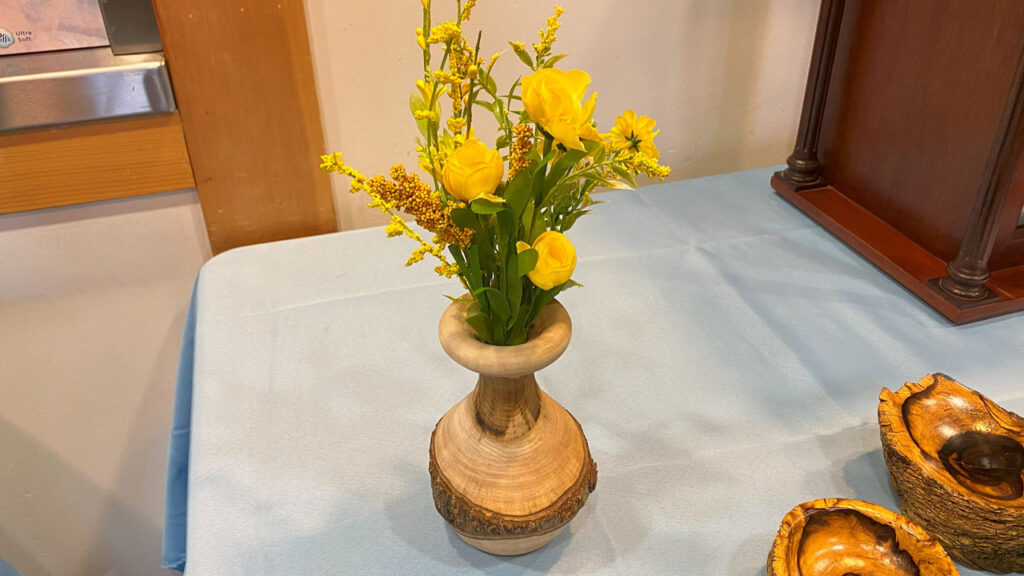
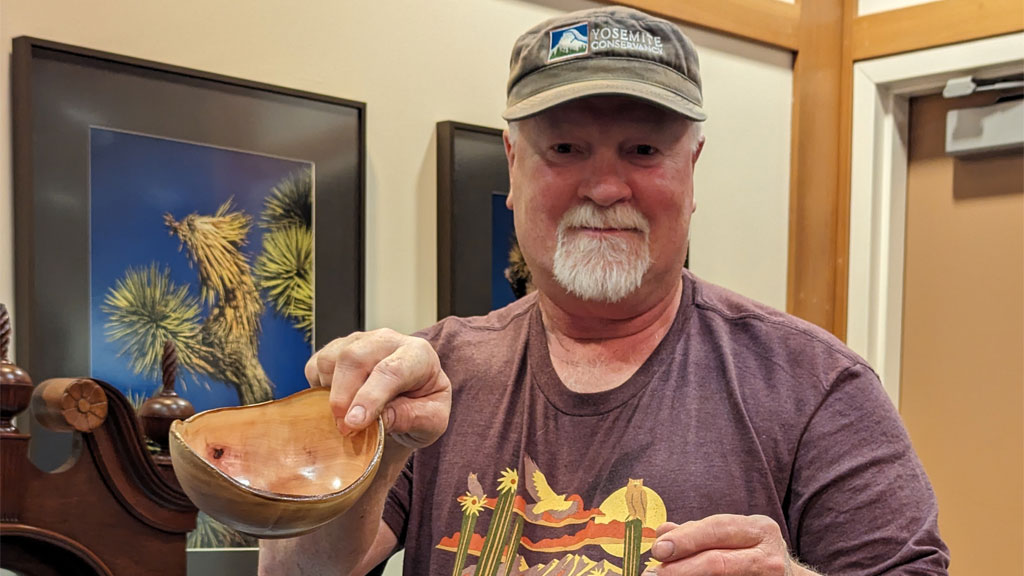
Jim Koren brought a madrone bowl, turned as thin as he could (the bottom flexes). He also turned a very green oak live edge bowl and noted that the rays extend into the bark.
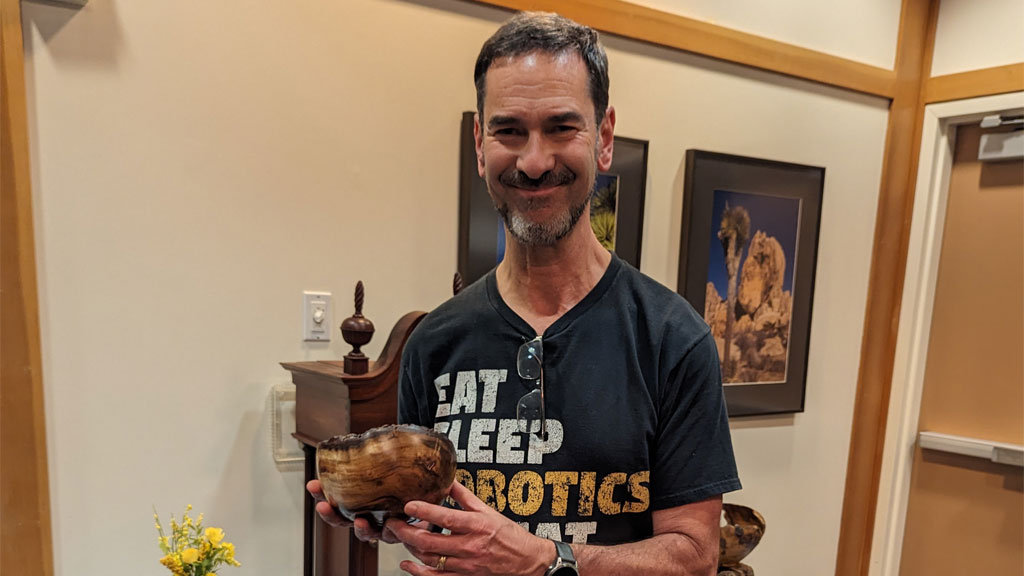
Chip Krauskopf showed a camphor bowl. To fill the cracks, he first used a metal lathe to cut very thin shavings of copper from a solid rod. He then ground the copper shavings in a spice mill, packed them into the cracks and affixed them with CA glue. The bowl was finished with walnut oil and spray lacquer.
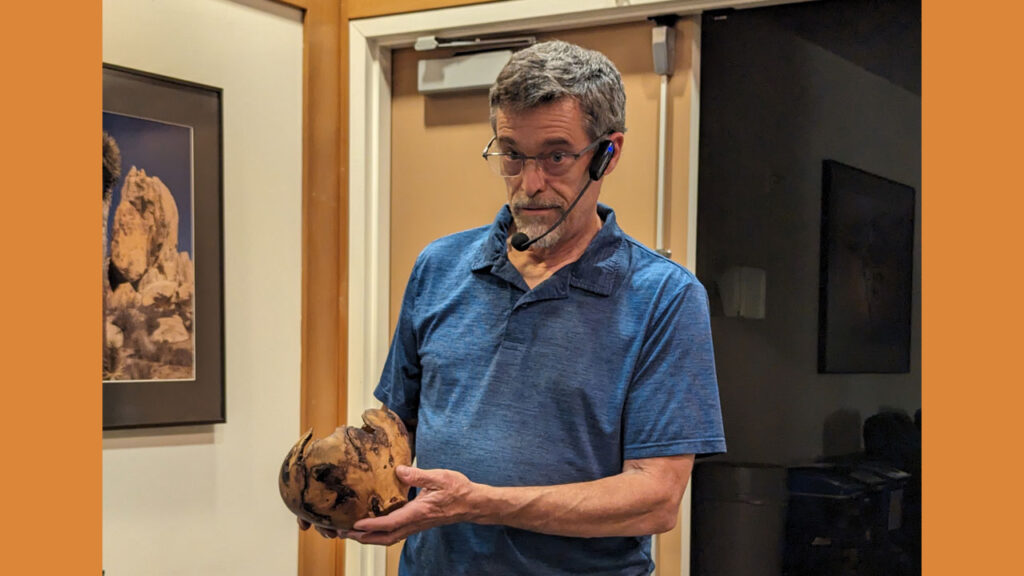
Claude Godcharles showed a piece turned from a piece of Mulberry. This tree is often pollarded, resulting in branch ends with many knots. He hoped the knots would make for an interesting piece but was disappointed that they mainly broke off (and flew off) as he turned. He had another piece of mulberry up for grabs, which James Craig took because he’s “always up for a challenge”.
Show & Tell:

Laura Rhodes brought in cherry box with a piece of spalted sycamore inlayed into the top. She also brought some child-sized treenware (wooden spoon, spatula and rolling pin) made for her grandson’s 4th birthday.
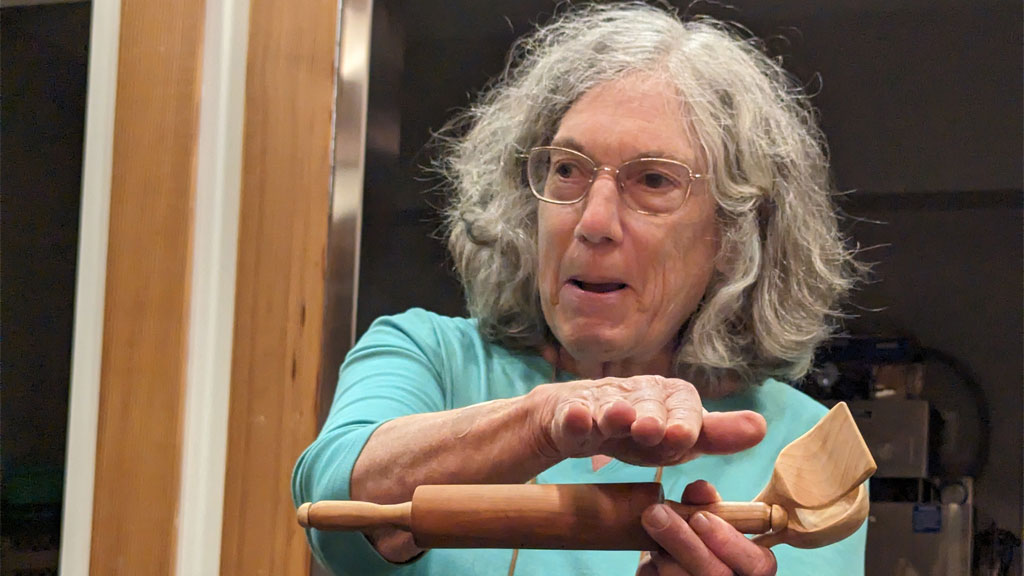
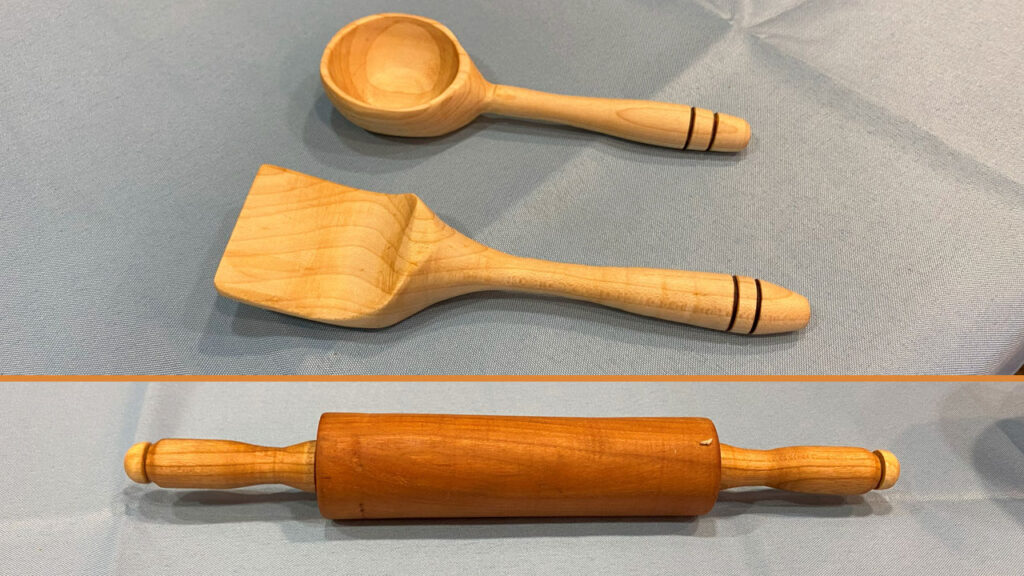
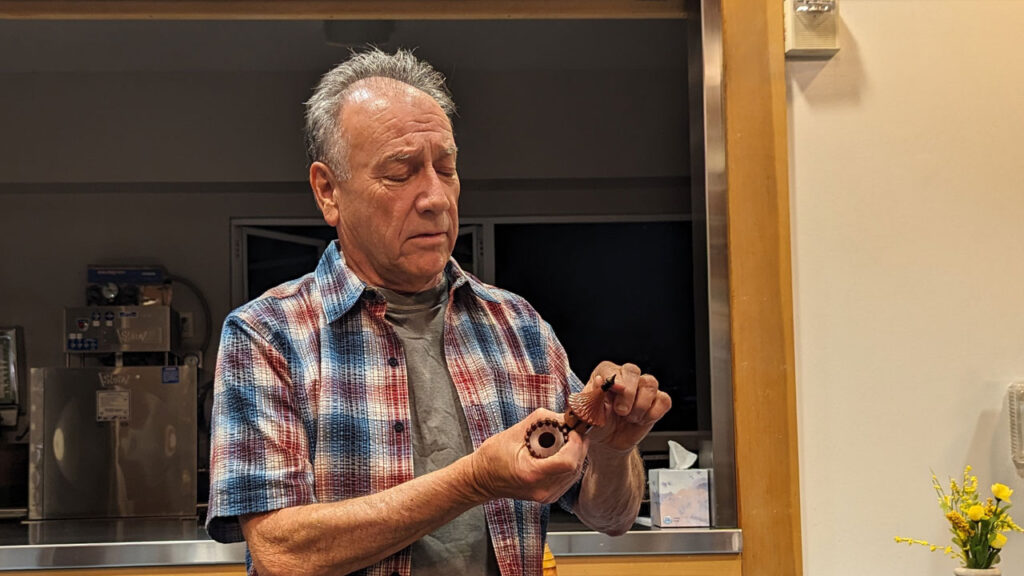
Jon Sauer showed an intricate castle-shaped box of blackwood. Accompanying the castle were a set miniature scepters, made of a variety of exotic woods and acrylics. One needs very good eyes to see the detailed textures turned onto the shafts of the scepters.
Visit Jon’s website: https://www.jonsauer.com/
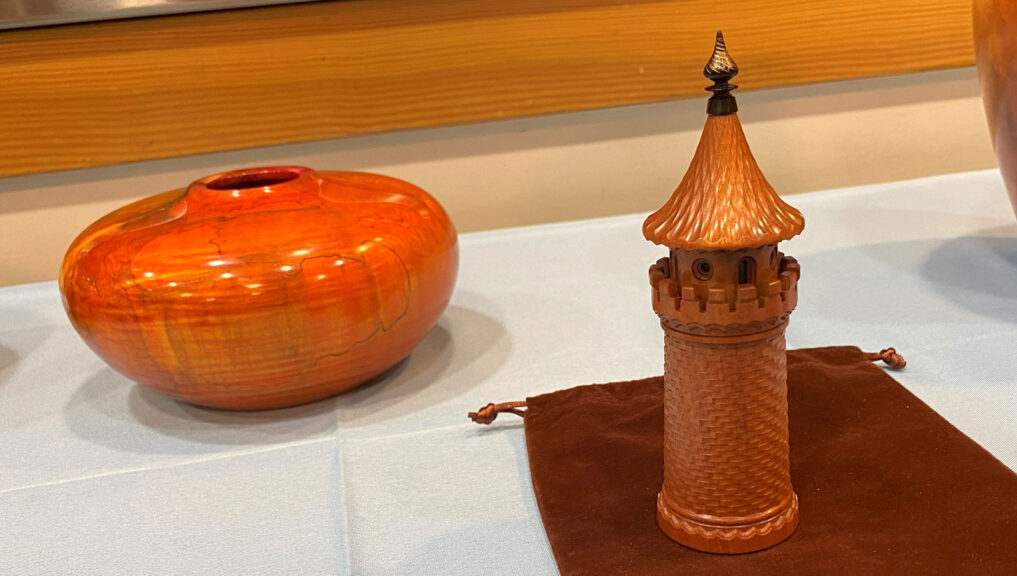
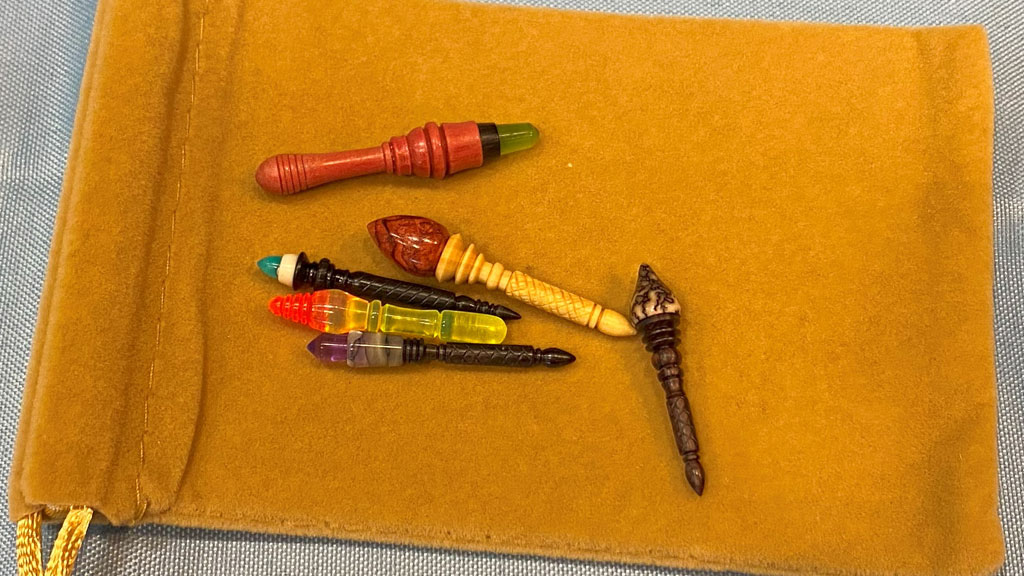
Nate Segraves brought an old growth redwood burl box finished with walnut oil. Nate’s daughter, who is just finishing the third grade, wanted Nate to make something blue to give to her teacher. Nate turned a vase from silver maple and used TransTint dye to make it blue. He finished it with walnut oil.
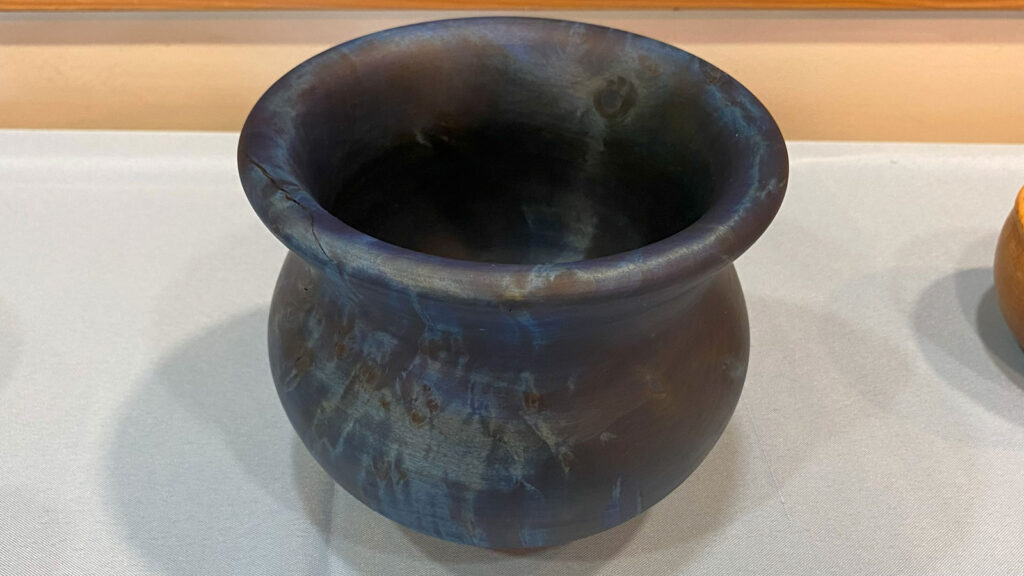
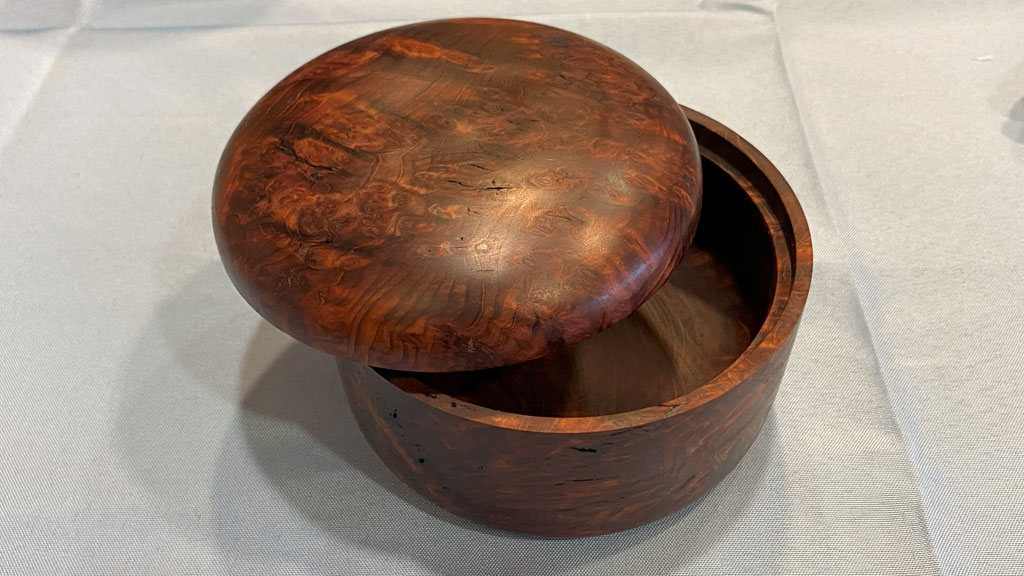
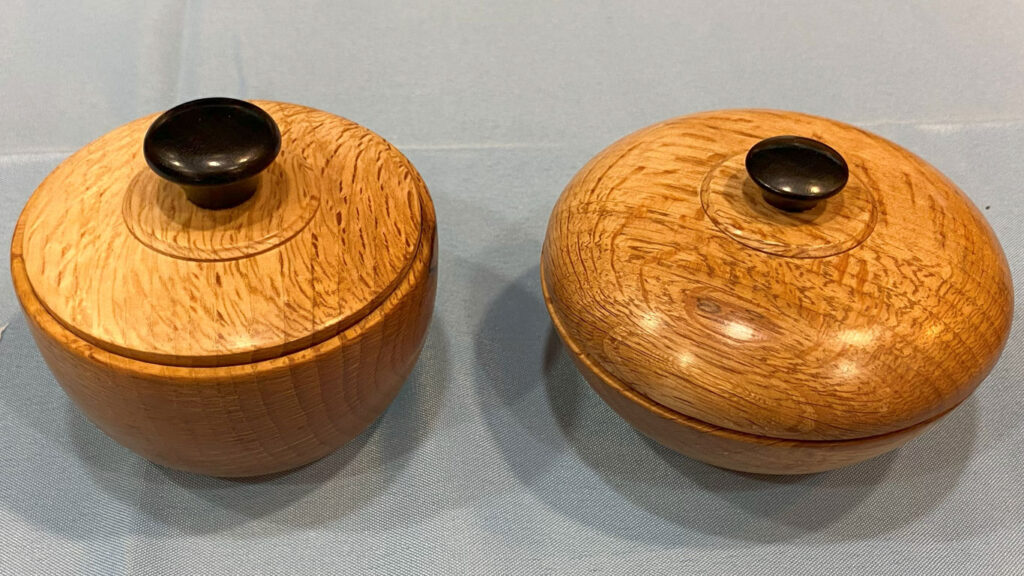
Jon Bishop brought 3 small cross-grain boxes and a simple bowl from a slab of oak he had in his shed for quite a while. The slab had split along the pith, leaving him with smallish diameter quarter-sawn pieces. The boxes each had a knob of Blackwood. Jon finished all the pieces with Tried and True and then buffed them out.
Tom Gaston turned a pot from Blue Oak obtained from Kelly. It was turned wet. He made a pot from Podocarpus, which was also turned wet, but stayed true. He dyed it with red, brown, and yellow TransTint dyes. Tom also showed a winged salt cellar made of apricot. Because it is a cross-grain piece and has warped slightly, the lid can be twisted to stay in place.
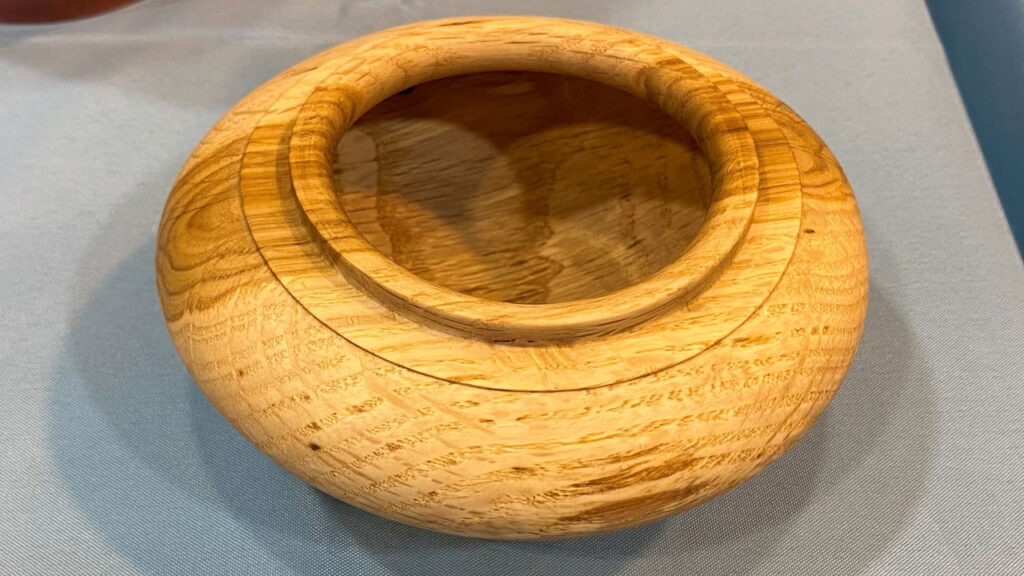
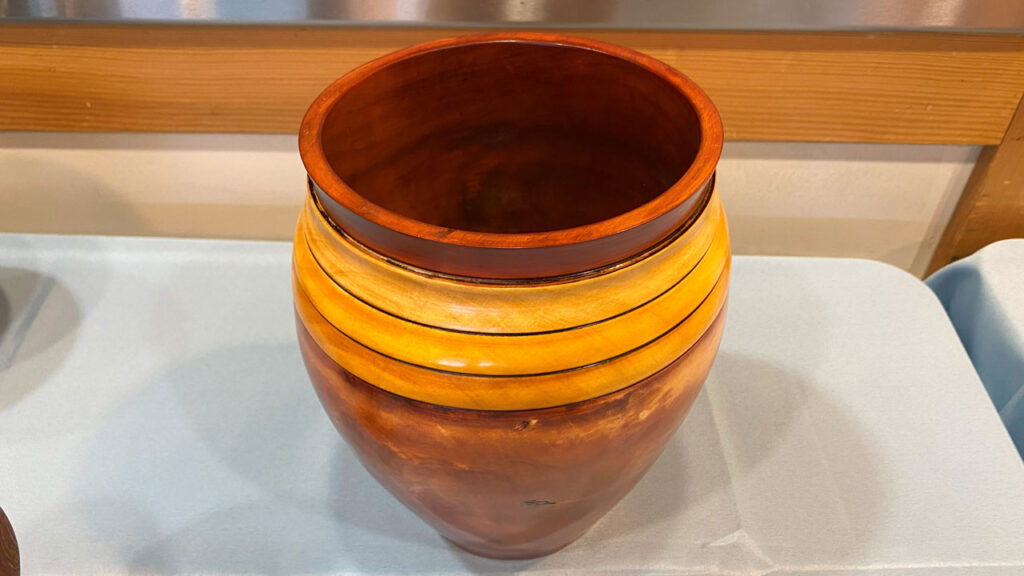
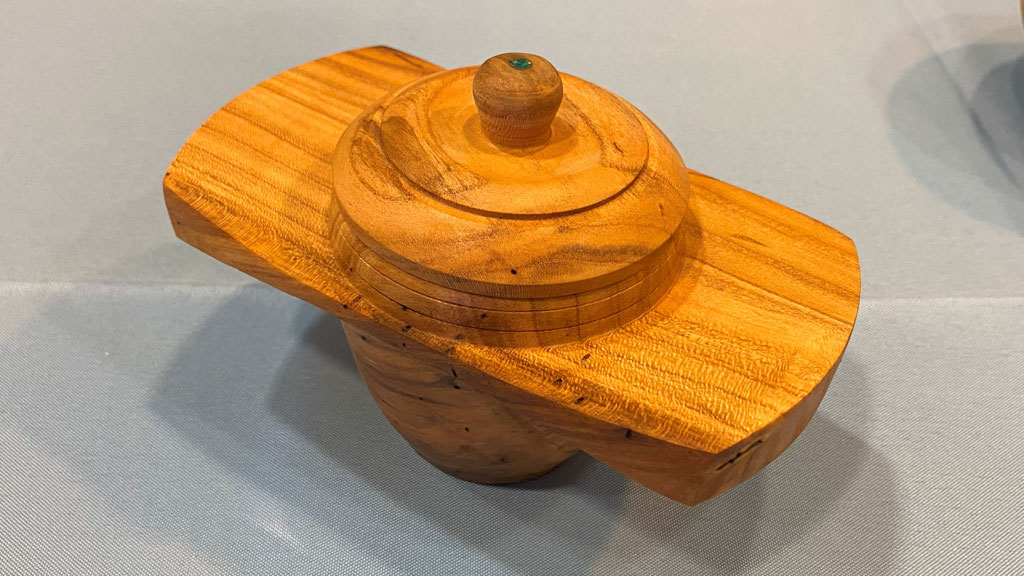
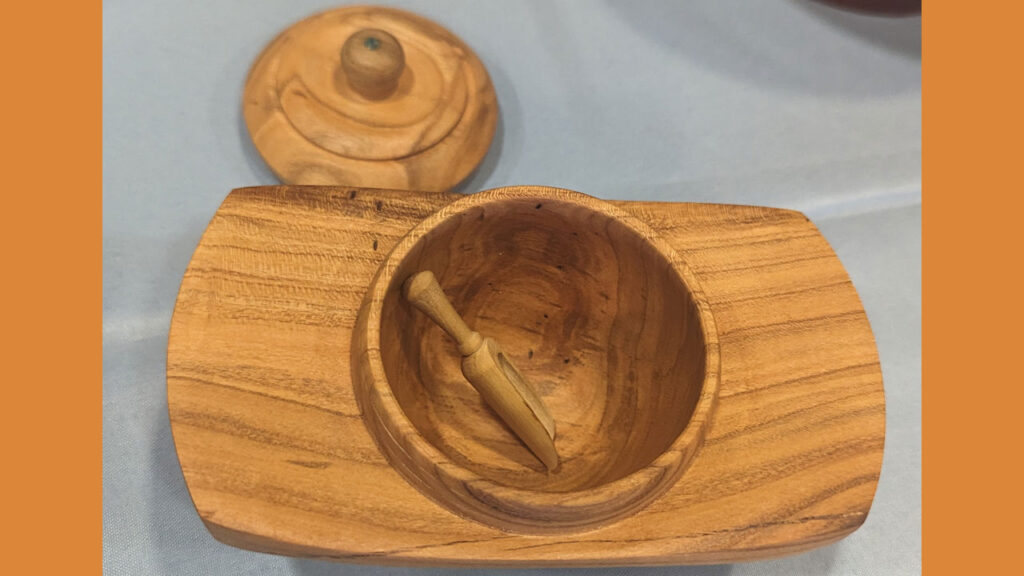
Mark Koenig brought in two hollow vessels which he turned two years ago from maple with burl and spalting. On the first he used successive layers of TransTint dyes (applied and then mostly sanded away) in red, then, yellow, then red. The other he used green dye. To apply the dye, he dripped it onto the piece while it was turning. Both vessels were finished with about 12 coats of spray lacquer (applied while on the lathe).
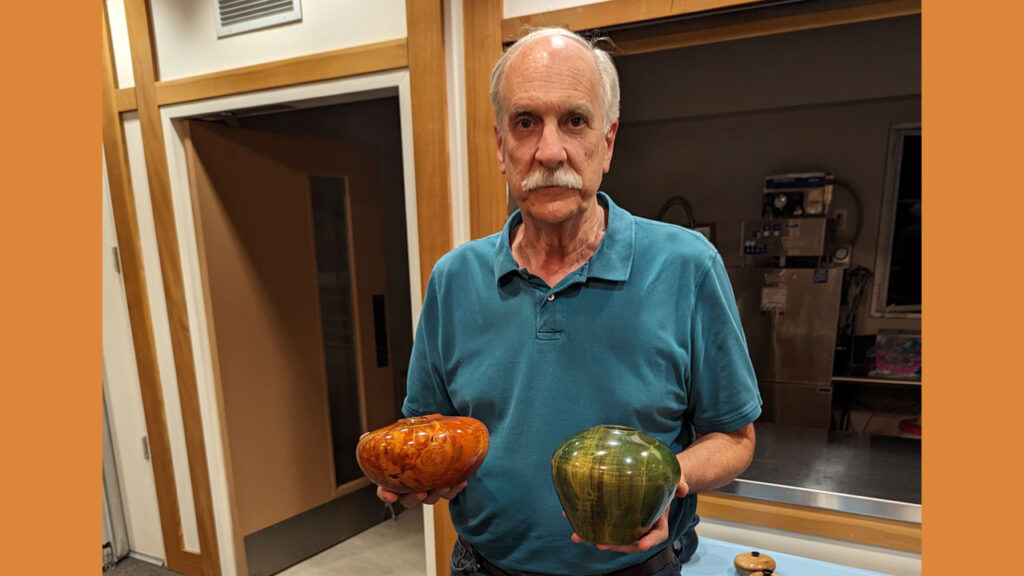
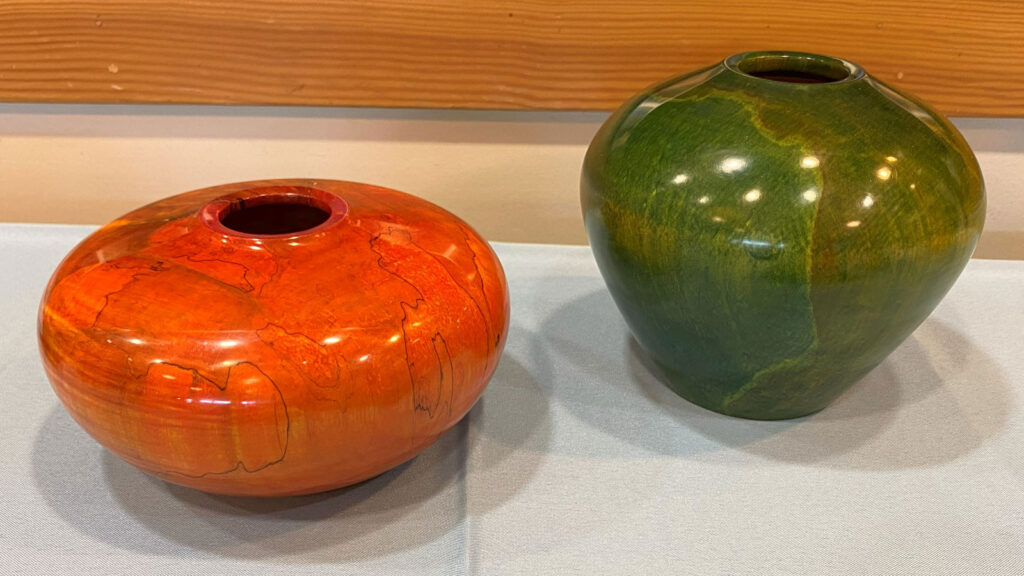
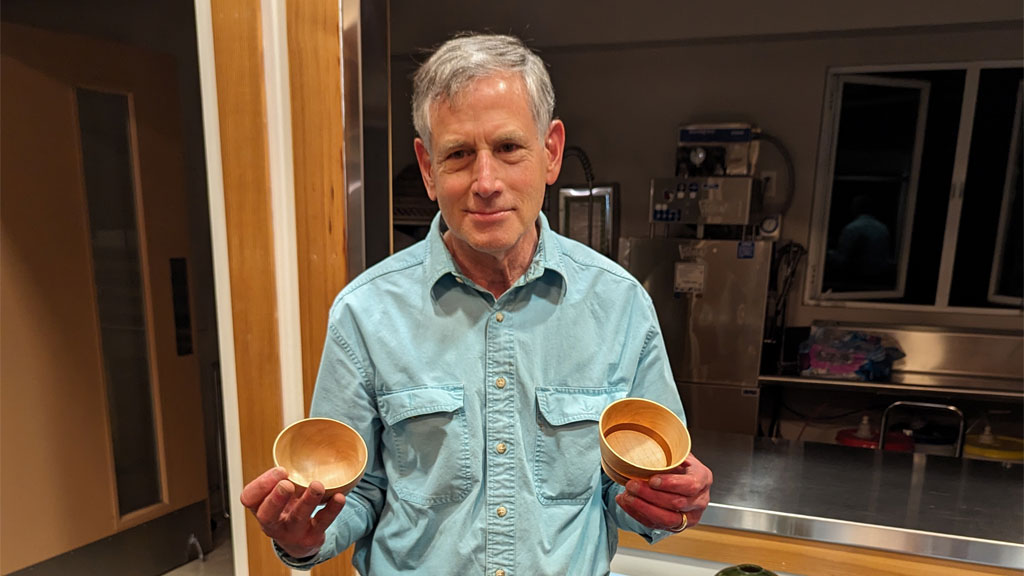
Tom Mandle had an exercise in “what not to do”. He was trying to turn a piece of maple into a very thin bowl. When he was testing the thickness, he put the calipers right through the piece. He was able to cut the bowl apart, turn a thin doughnut of cherry, and glue the cherry between the cuts. With his second bowl, he decided not to try to use the calipers to measure the thickness. Both bowls received a coat of sanding sealer followed by Tried and True.
James Craig brought his first goblet. He originally tried to use milk paint, but it clumped and he shaved it off. He also brought a little bowl with a laser etched pattern. The bowl is about 2.5″ in diameter.
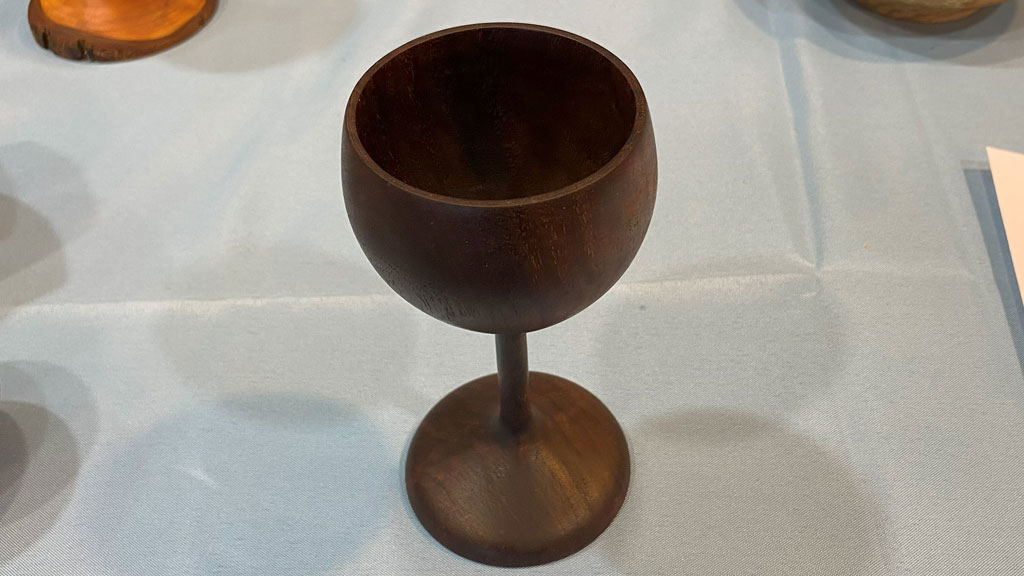
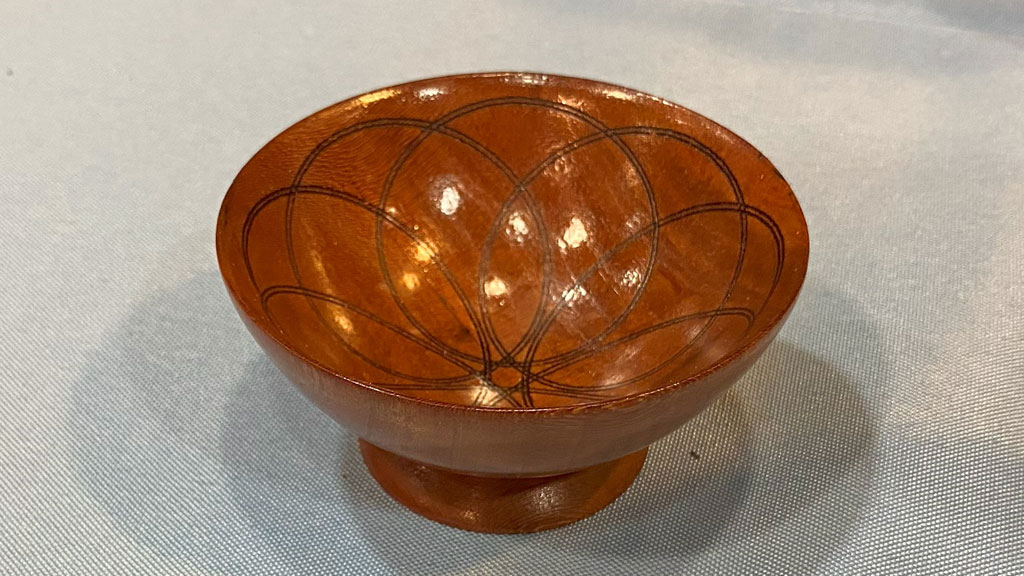
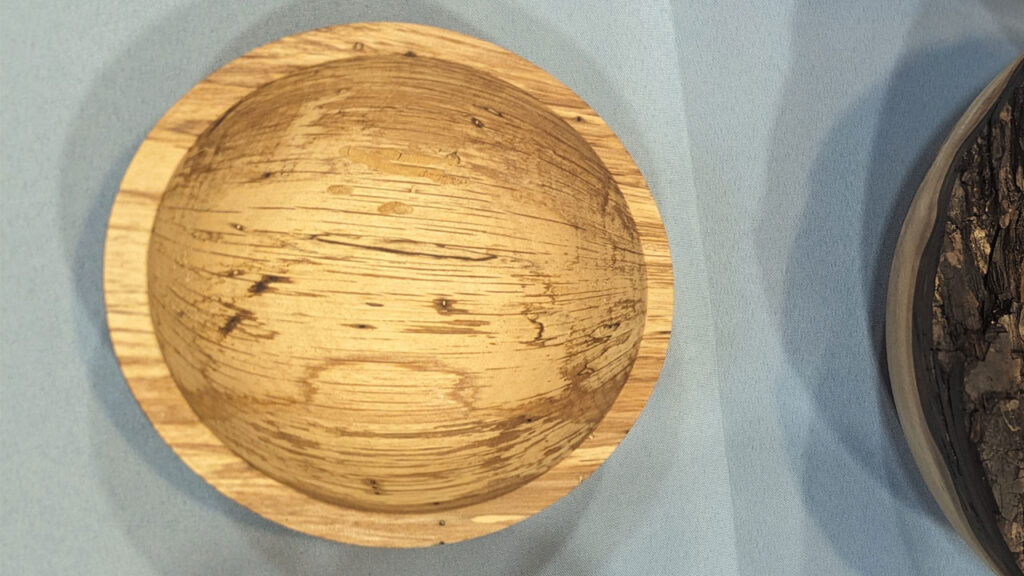
Claude Godcharles brought a spalted tan oak bowl. He had additional logs from the same tree available for the taking.
“As the Wood Turns” by Dave Vannier
As I recover from the AAW Symposium this year, I’d like to share some of my impressions and learnings. I think it is always good to understand someone’s goals when trying to compare it to your expectations. When I first started attending symposiums (Utah and AAW), I was actively trying to learn to turn and seeking inspiration. I was fortunate to have seen many of the world’s best professional turners over the years. I always found the Utah symposium on the BYU campus to be the best. After all the campus ice cream parlor was right there!
Over the years, I developed friendships with many great people. Our wood turning community is very unique, and a lot of the credit goes to Dave Ellsworth. Not only was he one of the founding fathers of AAW, but he instilled the unique philosophy that we all benefit from. Share everything, or be excluded. Early on some turners wanted to keep things secret. They were not allowed to demonstrate at AAW. This sharing gives us more knowledge than we can handle sometimes. Doesn’t help us with the skill, but gives us a chance. We aren’t shooting in the dark. It does mean that artists have to keep evolving and improving. One demonstrator this year said “I know you are going to copy me. If you do, please keep it in your home display. If you post it on line and I see it, I reserve the right to critique it, so it better be a good copy! Please find your own voice, not just copy others.” That was good advice, IMHO. Frank Sudol said that until you find your own voice, your soul will not be expressed, or something like that. I’ve tried to find my voice, while using the techniques others have developed.
At this point, with 24 years of turning under my belt, which is bigger than it used to be, I look at the social side of the symposiums more than the demonstrations. Not that the demonstrations aren’t interesting, just on a lower value scale. I thoroughly enjoyed Eli’s demonstrations, and picked up a tip that i will be trying. Art’s flame texturing was interesting, and motivated me to try it as soon as I could. If you are on Slack, you’ve seen the progression of this project, and what I learned doing it. Watching Donna airbrush was instructional. I’ve been doing it, kind of blind so I picked up some things to try. Andi’s carving was very educational, but probably convinced me that is not a direction I want to try. As soon as the video’s are released, I plan to watch some of the recorded ones that I skipped because they were recorded. I also want to note, that we have some pretty talented turners between WBW and SVW. Not all are as well known as some of the professionals, but none the less very talented.
I had a great time with friends from around the world as well as our local club members who traveled to Portland. Food, drinks, and great people, what more could you ask for. Thanks to all of you who put up with me!
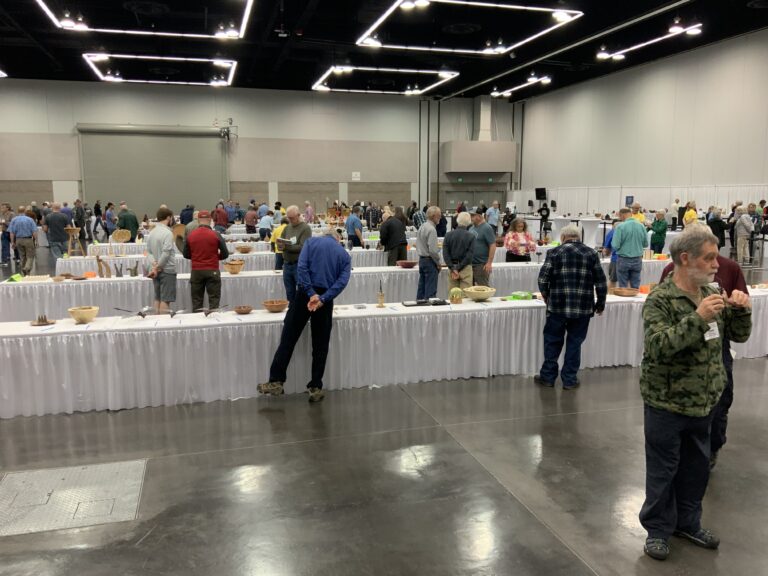
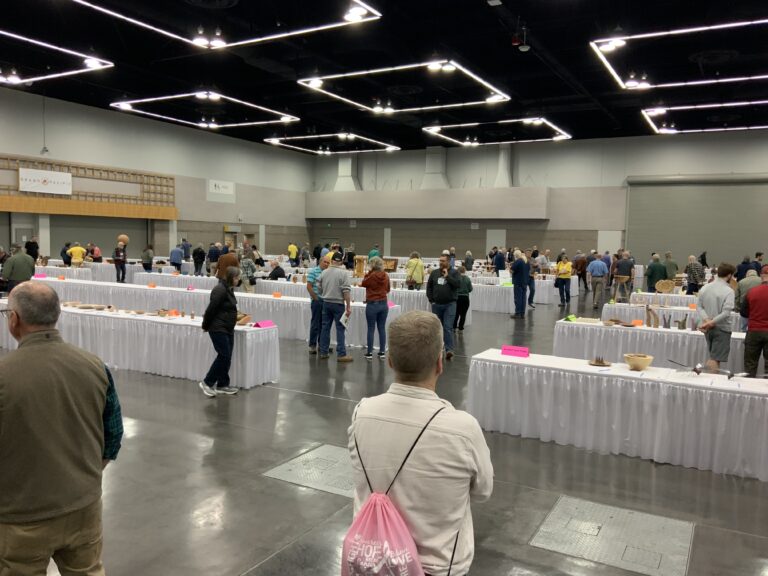
Newsletter Editing Notes
WBW members, if you have a personal website and would like it included in the President’s Challenge and Show & Tell sections of our Woodturning Newsletter, please let the newsletter editors know. Email us at info@westbaywoodturners.com.
WBW board members and committee chairs
President: Claude Godcharles
Vice President: Tom Gaston
Treasurer: Jon Bishop
Secretary: Laura Rhodes
Member at Large: Dean Caudle
Meeting Program Coordinator: Claude G acting
Visiting artist Coordinator: Dean Caudle acting
Anchor seal: Dennis Lillis
Craft Supply: Tina
Librarian: Kelly Smith
Audio Visual: Curtis Vose, Edgar Whipple
Website: Roman Chernikov
Woodturners Newsletter: Angela, Claude, David, Laura, and Roman

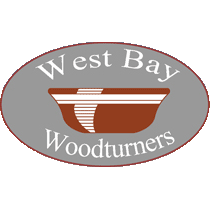

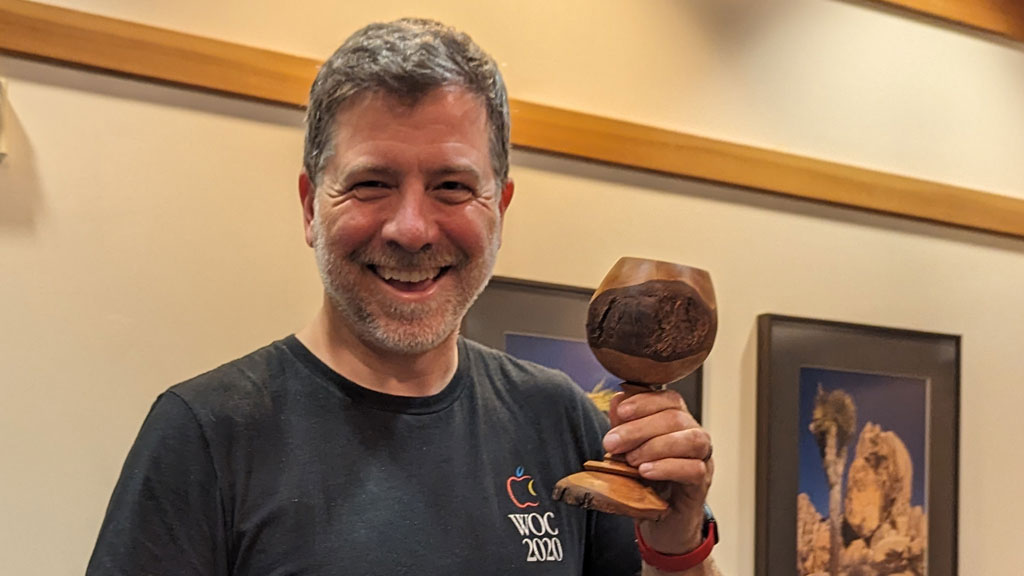
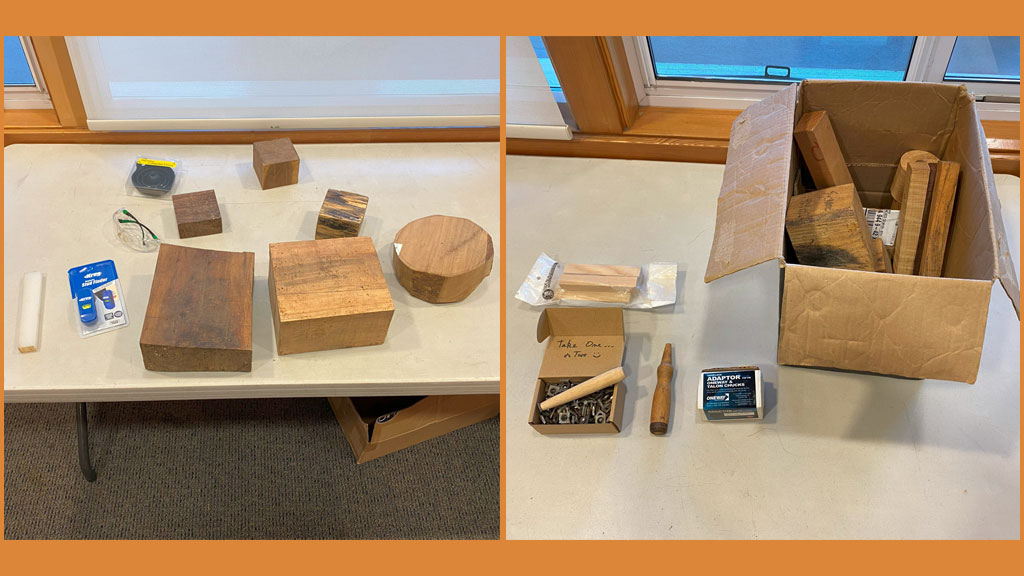
Leave a Reply